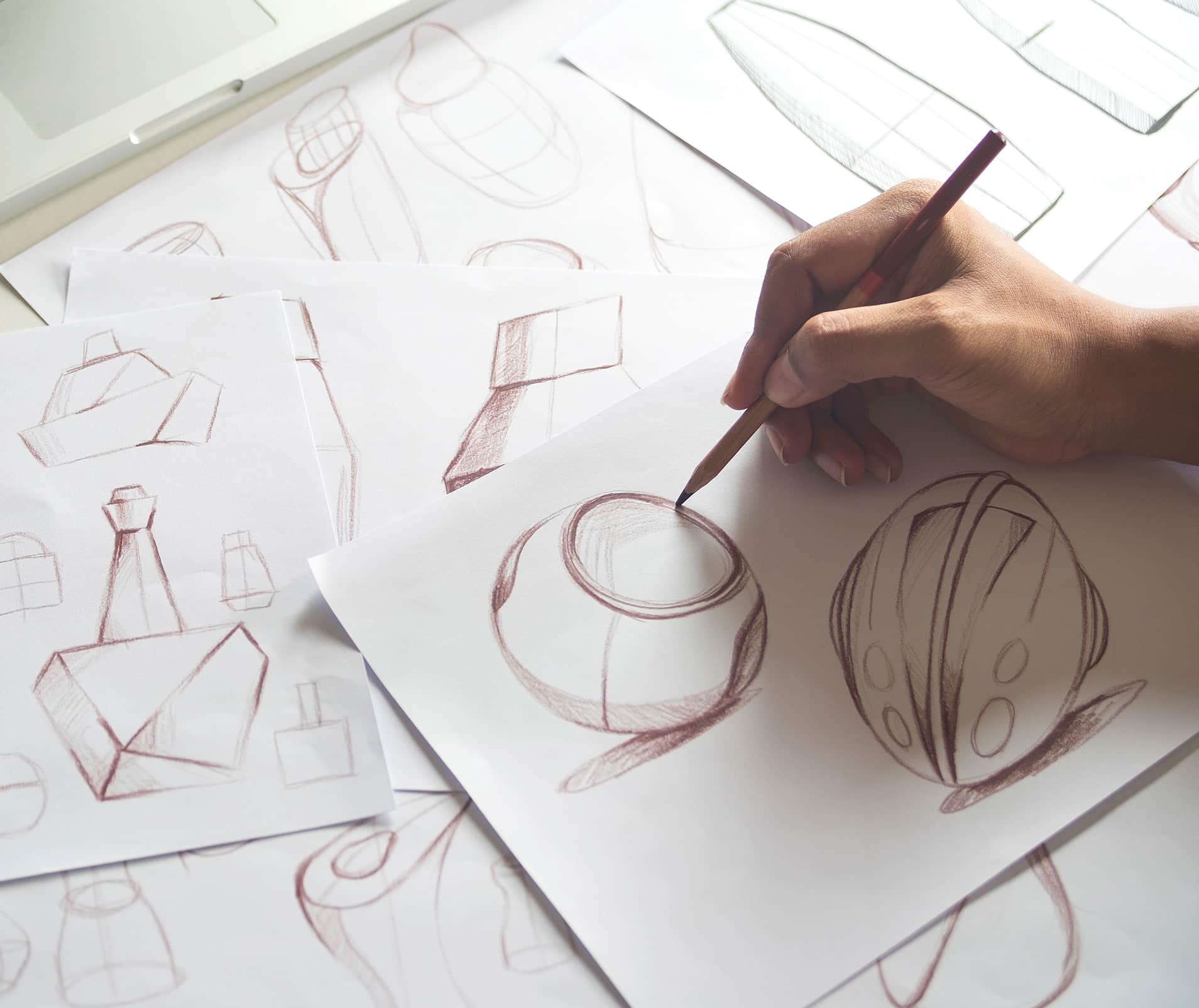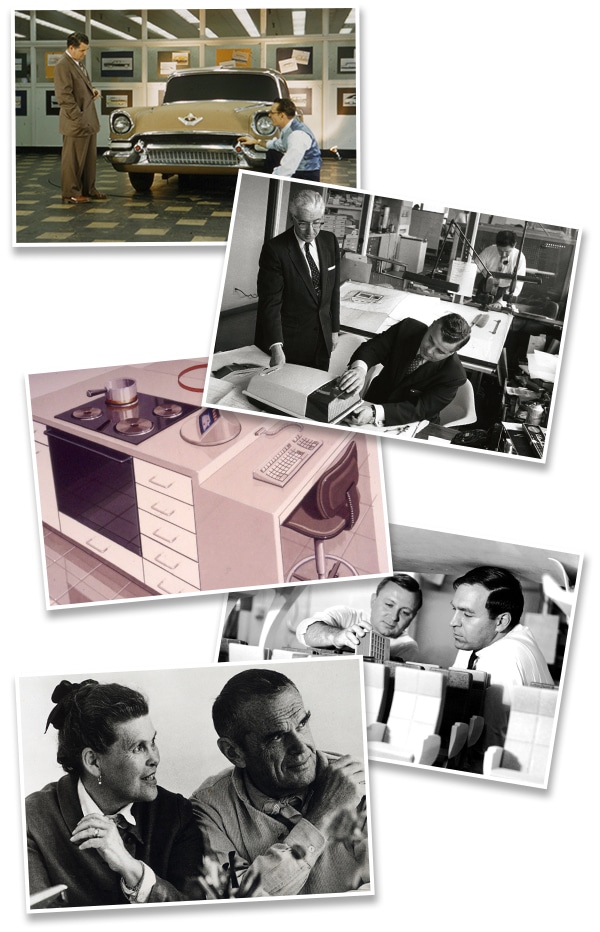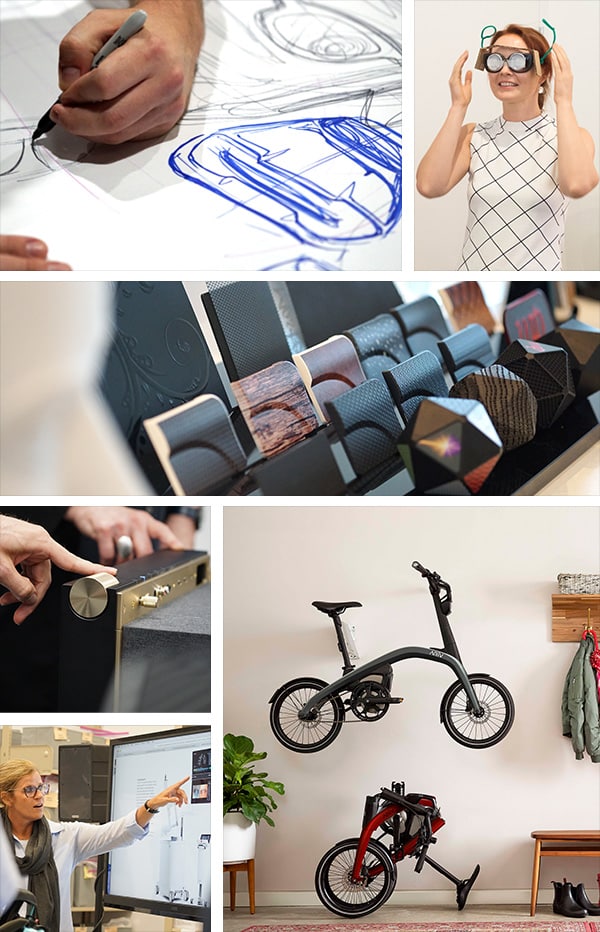What Is Industrial Design?
The professional practice of designing products, devices, objects, and services used by millions of people around the world every day.

Our definition of Industrial Design
Industrial Design (ID) is the professional practice of designing products, devices, objects, and services used by millions of people around the world every day.
Industrial designers typically focus on the physical appearance, functionality, and manufacturability of a product, though they are often involved in far more during a development cycle. All of this ultimately extends to the overall lasting value and experience a product or service provides for end-users.
Every object that you interact with on a daily basis in your home, office, school, or public setting is the result of a design process. During this process, myriad decisions are made by an industrial designer (and their team) that are aimed at improving your life through well-executed design.
How ID makes an impact
This excerpt is from Objectified, a feature-length documentary by Gary Hustwit about our complex relationship with manufactured objects and the people who design them. The piece highlights the design of the OXO Good Grips line of kitchen utensils by Smart Design, a design consultancy based in New York City, NY.
Used with permission. Visit hustwit.com for more information on this and other design films.
The profession at a glance
Common Skills
Drawing & Sketching
3D Modeling
3D Rendering
User Research
Visual Storytelling
Rapid Prototyping & Testing
Color, Materials & Finishes
Basic Engineering & Fabrication
Basic Computer Programming
Manufacturing Processes
Marketing & Branding
Practice Areas
Automotive & Transportation
Consumer Electronics
Furniture
Housewares
Environments & Retail
Medical & Healthcare
Toys & Accessories
Commercial & Industrial
Personal & Lifestyle
Sports & Recreation
… and everything in between!
Job Opportunity
Today, there are more than 29,500 working industrial designers in the United States and the median annual salary is $77,030. California, Michigan, and New York are the top three states with the highest concentrations of employed industrial designers per capita. (Sept. 2021, Bureau of Labor Statistics)
Related Disciplines
User Experience (UX) Design
User Interaction (UI) Design
Graphic Design
Service Design
Design Research
Design Strategy
Branding & Marketing
Engineering
A brief history
Emerging as a professional practice in the early 19th century, though there are examples well before this, industrial design can be directly linked to the industrial revolution and transition from small volume craft to mass-produced products for a consumer class population. Often straddling the line between artist and engineer, early industrial designers frequently found themselves in a position dealing purely with aesthetics and styling.
Soon enough, design consultancies began to emerge that offered design services to companies that didn’t have the resources to build their own in-house teams. Walter Darwin Teague, FIDSA, for example, founded TEAGUE in 1926 and is responsible for the Polaroid Camera, Pringles canister, and Boeing commercial airline interiors of the time. Sundberg-Ferar is another early design consultancy, founded by Carl Sundberg and Montgomery Ferar in 1934. Both TEAGUE and Sundberg-Ferar are still in operation today and are credited with the creation of countless well-known products over many decades.
IDSA’s first president, Henry Dreyfuss, FIDSA and his contemporary, Raymond Loewy, FIDSA were also a prolific industrial designers in the 1930’s though the 1960’s.
“Design is a plan for arranging elements in such a way as best to accomplish a particular purpose.”
Charles Eames
By the time designers like Charles and Ray Eames, Belle Kogan, FIDSA, Ellen Manderfield, L/IDSA, and Dieter Rams entered the field in the 1950’s and 60’s, industrial design was a proven practice and many large corporations such as IBM, General Motors, and Electrolux had in-house design teams working on new products for worldwide markets.
As time passed, the industrial designer’s influence and role shifted from purely focusing on how a product looked or functioned to including human ergonomics, end-user benefit, material innovations, and corporate branding. All of these considerations have become central to the industrial design profession, which has left an enduring impact on business and society.

Image 5: Ray and Charles Eames (©Eames Office)
Modern practice
Today, industrial designers are commonly part of multidisciplinary teams made up of strategists, engineers, user interface (UI) designers, user experience (UX) designers, project managers, branding experts, graphic designers, customers, and manufacturers, all working together towards a common goal. The collaboration of so many different perspectives allows the design team to understand a problem to the fullest extent, then craft a solution that skillfully responds to the unique needs of a user.
Industrial designers design products for users—mainly people, but sometimes pets—of all ages, races, demographics, incomes, ethnicities, abilities, and gender identities or expressions. An empathetic designer is able to “walk in someone else’s shoes” through research and observation to glean insights that will inform the rest of the design process and ultimately result in a design solution that solves a problem in a beneficial and meaningful way.
Empathy for users, the environment, and society as a whole is a core attribute of the modern design process.
In the ideation, or concept, phase of a project, designers will sketch, render, 3D model, create prototypes, and test ideas to find the best possible solutions to a user’s needs. This phase of the design process is messy, fast-paced and often exciting! By testing, breaking, and rebuilding prototypes, designers can begin to understand how a product will work, look, and be manufactured.
In the final stages of the design process, industrial designers will work with mechanical engineers, material scientists, manufacturers, and branding strategists to bring their ideas to life through production, fulfillment, and marketing. After months, and sometimes years, of development, a product will find its way to store shelves around the world, where people can purchase it and bring it into their homes.
The industrial design profession is constantly shifting and evolving to keep pace with rapid advancements in technology, cultural trends, and socio-economic forces. Designers must now face new challenges that were inconceivable when the profession originated. It is indeed a fascinating time to work in the design industry.

Bottom Image: ARIV e-Bikes (GM Design Archive)
Industrial design education
Higher learning
There are over 60 schools in the United States offering industrial design and related programs. Most professional industrial designers receive a bachelor’s degree from an accredited academic institution. Master’s degrees and PhD’s in design also are available for those who wish to further their studies.
Additional resources
- INNOVATION magazine
- Design firms in the US
- Design job board
- March 5 – National Industrial Design Day
- Valuing the Art of Industrial Design – 2013 Report by National Endowment for the Arts
Improving diversity in the profession
IDSA is actively working to help create more opportunity, equity, and representation across many aspects of the design profession. We are specifically investing in:
- Increasing diversity and minority representation in IDSA’s core programming, events, leadership teams, membership, publications, partnerships, awards, and scholarships
- Developing new pathways and partnerships that will extend IDSA’s ability to support minority and low-income communities, and to increase access to industrial design education and professional opportunities
- Being a catalyst in transforming the industrial design industry so that it better reflects our diverse country and world, and to dismantle the structural racism and inequities that permeate design and our communities
Committing to and realizing their success will have a profound benefit that impacts so much more than just our organization alone. We want to demonstrate that institutional change is possible and we must lead by example.